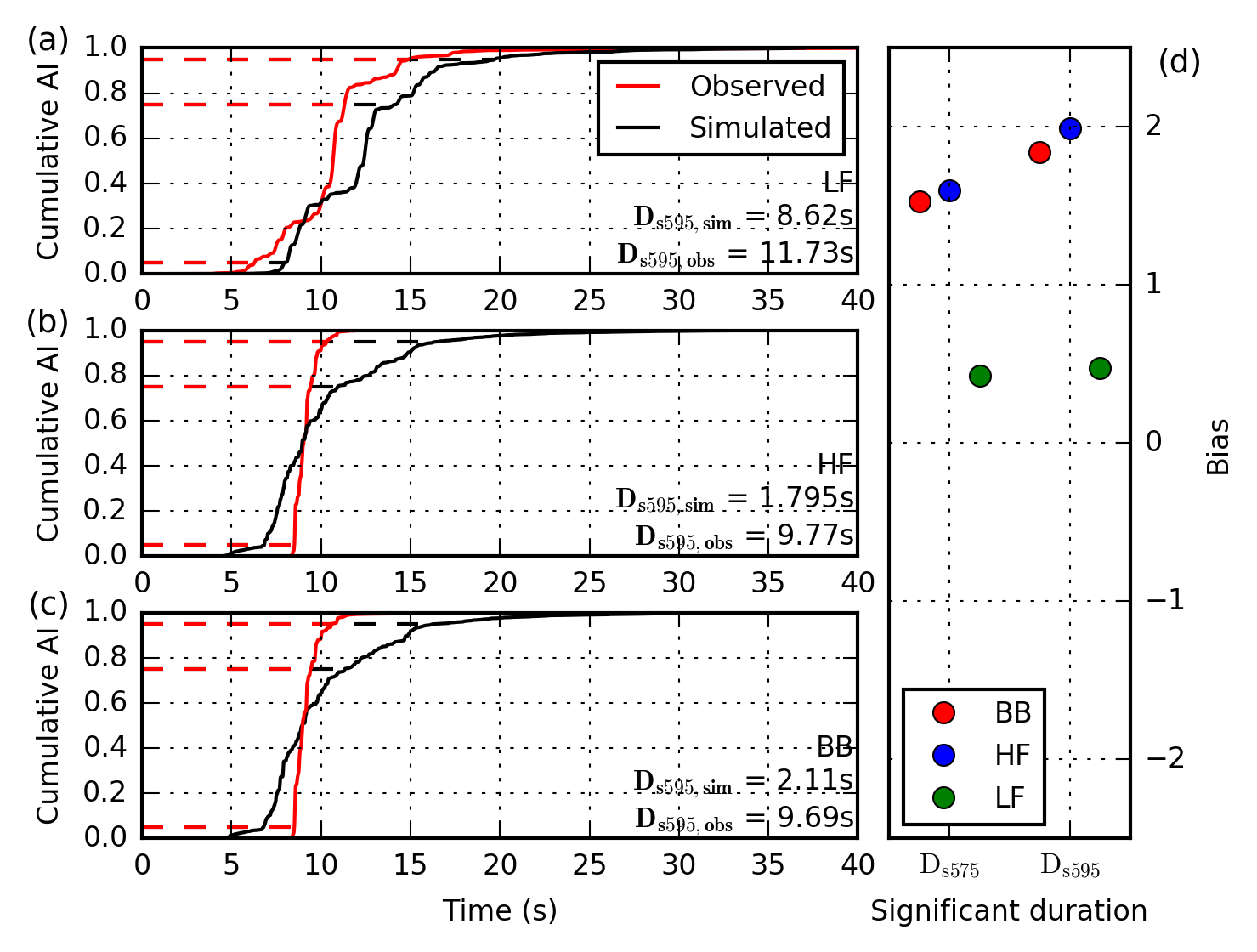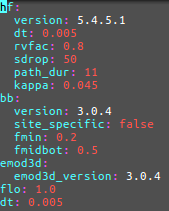This is a modification of gmsim_v16.1.1 based on the work of Robin Lee in 2017/2018. This version implements a single change:
Changing the HF path duration from Dp = 0.07R to the Boore and Thomson (2014) (https://pubs.geoscienceworld.org/ssa/bssa/article-abstract/104/5/2541/351523) path duration developed using the NGA-West2 database.
This change to increase the HF path duration was a result of simulated ground motion duration being identified as too short when compared to observed ground motions.
Background
Lee et al. (2019) simulated 146 small magnitude earthquakes (3.5<Mw<5.0) in the Canterbury region with 1854 high-quality observed ground motions recorded across 43 strong motion stations. Using mixed-effects analysis, the results identified that the simulated path durations appeared too short relative to observed ground motions. Several features provide evidence for this conclusion.
Firstly, the magnitude dependence of between-event residual for PGA and Ds575, when combined with the model bias, indicate that the larger magnitude events produce predictions with smaller residuals (i.e. bias + between-event residual is smaller for Mw 5.0 compared with Mw 3.5). Figure 1 provides evidence for the bias and between-event residuals with the key areas highlighted by the red boxes. As both PGA and Ds575 are strongly influenced by high frequencies and are connected by durations (a longer duration, given a constant power spectrum, will result in smaller PGA values), it is inferred that the HF duration, which comprises a source component and a path component, is the cause of this bias.
Figure 1. Dependence of Mw bias in between-event residuals for PGA and Ds575, and bias observed in the prediction methods.
Figure 2 presents husid plots of low frequency (LF), high frequency (HF) and broadband (BB) components of a station from one of the 146 simulations. The LF component appears to have Ds595 which are similar between observed and simulated, while the HF and BB have simulated Ds595 which are significantly shorter, reinforcing the notion that it is the path duration causing bias in the significant durations.
Figure 2. Husid plots of the LF, HF and BB components of a simulated ground motion.
Lastly, Figure 3 plots observed path durations against the current path duration model used in the HF simulations (red line). Observed path durations were calculated by subtracting an empirical source duration (from Afshari and Stewart (2016)) from 2xDs2080 (to be consistent with the analysis by Boore and Thomson (2014). The plot provides strong evidence to suggest that the path duration component is too short. Boore and Thomson (2014) also identified that path duration models being used in "stochastic" simulations were too short and developed a new model based on the NGA-West2 dataset, shown as the black line. As this model was developed for use in "stochastic" simulations, and is more consistent than the current HF path duration, it is suggested that we adopt this new path duration model.
Computational Implementation
The path duration model was already programmed into the HF simulation fortran code as model number 11, hence the path_dur is set to be 11 for this version.
Additionally, a new time window function was required for this model, this was added into the HF simulation fortran code for version 5.4.5.1, hence the hf version is set to be 5.4.5.1.
With the binary and yaml workflow, the root_defaults.yaml script should be the following for a 100m grid run:



